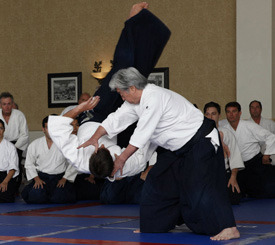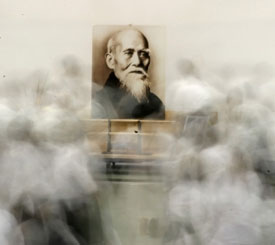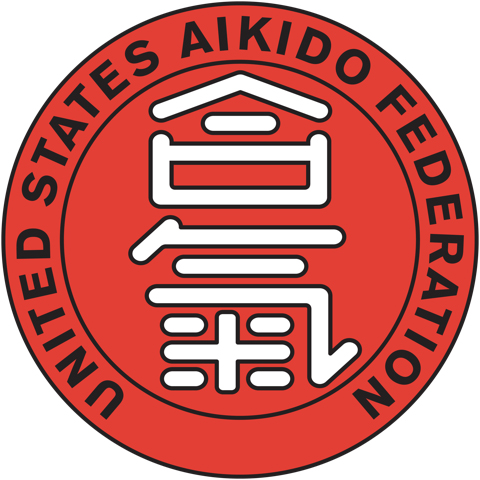ABOUT AIKIDO
 Aikido is a traditional Japanese martial art created by Morihei Ueshiba (O-Sensei) in the early 20th century. As the physical practice of philosophical principles developed by O-Sensei, Aikido strives for the ultimate goal of peaceful resolution rather than defeat. Composed of three Japanese characters: Ai, meaning harmony; Ki, spirit or energy; and Do, the path or the way, the word Aikido thus signifies the "Way of Unifying Life Energy". In this regard, O-Sensei created a martial art in which the preservation of one’s attacker is equally important as one’s own self defense.
Aikido is a traditional Japanese martial art created by Morihei Ueshiba (O-Sensei) in the early 20th century. As the physical practice of philosophical principles developed by O-Sensei, Aikido strives for the ultimate goal of peaceful resolution rather than defeat. Composed of three Japanese characters: Ai, meaning harmony; Ki, spirit or energy; and Do, the path or the way, the word Aikido thus signifies the "Way of Unifying Life Energy". In this regard, O-Sensei created a martial art in which the preservation of one’s attacker is equally important as one’s own self defense.
Aikido is more than the study of physical techniques; proper etiquette, attitude and behavior are also stressed. The basic movements of Aikido are circular in nature. The Aikidoist trains to harmonize with, rather than confront an aggressive line of force and converts it into a circular motion that renders attackers helpless. The Aikidoist trains to apply various wristlocks, arm pins or unbalancing throws to subdue and neutralize attackers without serious injury. Such practice is done in tandem with learning the art of falling, or "ukemi", which trains the body and mind to receive such techniques in a safe manner.
Aikido is not a sport and hence there are no competitive tournaments. Rather, by cooperative training, the Aikidoist betters oneself without belittling others, without the intention of harm or fear of injury. As traditional Japanese budo, Aikido maintains the qualities of martial spirit, effective technique and intense training. This, coupled with the premise of mutual respect and caring, and the important balance between attacker and defender, encourages the spirit of O-Sensei’s desire for universal peace.
HISTORY OF AIKIDO
 Aikido was developed by Morihei Ueshiba. To practitioners of Aikido he is more commonly known as O-Sensei (“Great Teacher”).
Aikido was developed by Morihei Ueshiba. To practitioners of Aikido he is more commonly known as O-Sensei (“Great Teacher”).
O-Sensei was born on December 14, 1883 in Tanabe City, Japan. As a young man he explored many martial arts including judo, kendo and jujitsu. In 1912, he and his wife, Hatsu, moved to Hokkaido where he began studying Daito-ryu jujitsu under the guidance of Sokaku Takeda Sensei. O-Sensei studied intensively, becoming quite technically proficient; however, his spiritual unrest mounted as his awareness of the futility of a path based on victory over others came to light. Transformed by his spiritual insights, O-Sensei’s technical mastery evolved into a martial art of refinement and astonishing power, fundamentally different from those that preceded it. His heightened spiritual quest for harmony and peace rather than defeat led him to develop the martial art of Aikido.
"The secret of Aikido," he wrote, "is to harmonize with the movement of the universe and bring our selves into accord with the universe itself." O-Sensei maintained that budo is a work of love, a path to overcome discord in our selves and bring peace to the world, "to make the heart of the universe one's own heart."
In 1927, O-Sensei moved to Tokyo where he founded his first dojo, the Aikikai Hombu Dojo, which still exists today as the Aikido World Headquarters. On April 26, 1969, O-Sensei passed away, leaving his son, Kisshomaru Ueshiba, to become Aikido Doshu ("Aikido Headmaster") of the Aikikai World Headquarters. Kisshomaru Ueshiba Doshu was in turn succeeded by his son and O-Sensei’s grandson, Moriteru Ueshiba Doshu in January 1999, who to this day continues to spread the art of Aikido throughout the world.
